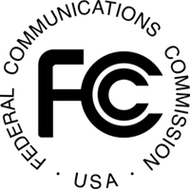 After burning off my holiday calories shoveling out of Snowmageddon 2010, I was ready to settle down with a good book and a flagon of mulled cider. Perhaps I was still looking for more Sisyphean exercises, so instead of Harry Potter, I reached for my MacBook and downloaded the FCC’s complete Report and Order in the Matter of Preserving the Open Internet, otherwise known as the Net Neutrality rules.
After burning off my holiday calories shoveling out of Snowmageddon 2010, I was ready to settle down with a good book and a flagon of mulled cider. Perhaps I was still looking for more Sisyphean exercises, so instead of Harry Potter, I reached for my MacBook and downloaded the FCC’s complete Report and Order in the Matter of Preserving the Open Internet, otherwise known as the Net Neutrality rules.
Published on Friday, this 87-page document, excluding appendices and the commissioners’ separate statements, contains over 400 footnotes. A lot of work was expended, so kudos to the FCC’s paper-meisters.
Spoiler alert: the good part starts at Section IV ( paragraph 115, page 62), “The Commission’s Authority to Adopt Open Internet Rules.”
I am all for the Report’s net neutrality rules for transparency, no blocking, and no unreasonable discrimination. But after reviewing the FCC arguments in section IV, along with the usual relevant cases, I don’t think this dog will hunt.
First, I’d like to thank my Information Service Provider, Comcast, for routing the FCC pdf file through their information network, with help from their information storage processors, and out over the information cables to my laptop.
I’m alluding in loving fashion to the infamous Brand X decision in which the Supreme Court in 2004, mistakenly and tragically, ruled that cable broadband is an information service. The reasoning of the Supreme Court was nit-pickingly zany and technically obtuse, as I have previously ranted about.
But they had a lot of help from the FCC itself. With their equally infamous Cable Modem Declaratory Ruling (2002), Chairman Michael Powell executed an amazing U-turn in FCC policy, in effect sealing the ultimate fate of last Friday’s latest attempt to right the good ship FCC.
The other Michael, Copps, at that time wrote this in his dissent:
Amen to that.
In one stroke, FCC gave life to a new mutant type of service provider, which walks and quacks much like a telecom carrier, but with new super powers. It is an unregulated vampire duck. The FCC tried to drive a stake in this creature in the FCC vs. Comcast. As we all know, DC Court of Appeals decided last April against the FCC.
In that case, the FCC went on a scavenger hunt looking for wording in the Communications Act that would allow it to regulate Comcast’s network practices, specifically its blocking of P2P software. Pinned down by its own Cable Modem ruling, which stripped the FCC of any direct power to regulate cable broadband providers, it had to instead rely on its statutory power of “ancillary authority”
For this to work, the Commission had to prove that regulating network management was necessary for it to carry out other, more broadly defined functions. If it found this fuzzier authority in the Act, it could then argue that it had the authority to rule on app blocking, thereby bringing net neutrality to the loose, anything-goes Title I territories.
The hunt was on. It finally corralled the high-toned, but nebulous first sentence of section 706. Here’s what the FCC was banking on:
Interestingly, the remainder of section 706 deals with the preparation of, ur, a freakin’ report!
No matter. The DC Court thought otherwise, noting that in 1998, the FCC concluded the complete opposite—that is, section 706 was not an independent grant of authority. And the Court reminded the FCC can not easily depart from its prior understanding. Pinned down again.
In Friday’s Open Internet report, it again relied on, you guessed it, section 706 and tried to re-argue the Comcast ruling using a different line of attack. These FCC attorneys never say die.
Perhaps hedging it bets, the FCC also looked into … Title II!
Yes, the the part of the Communications Act that Comcast et. al. is now no longer ruled by is where the FCC decided its net neutrality authority resides. I don’t want to go into the agency’s arguments in much detail, but it involves a-this-connected-to-that line of reasoning.
Roughly, since VoIP is an information service, and traditional telecommunication carrier use VoIP to link parts of their networks, then blocking or discrimination by an intermediate and unregulated information provider can disrupt regulated Title II common carriers from interconnecting with each other, which is a legal obligation.
Enough.
This thing ain’t gonna fly. The FCC knows it. The industry knows it as well. It will quickly crumble in the courts.
I applaud Michael Copps for singling out some of the villains —”previous commissions”—but this order will not “steer ourselves back toward a better course.”
Related articles
- FCC’s Open Internet Report and Order (fcc.gov)
- FCC’s Net Neutrality Rules Face Tough Legal Questions (legaltimes.typepad.com)
- FCC Classifies Cable Modem as an Information Services (fcc.gov)
- Court of Appeal Vacates FCC’s Comcast Order (techlawjournal.com)
- Telecommunications by Any Other Name (technoverseblog.com)


